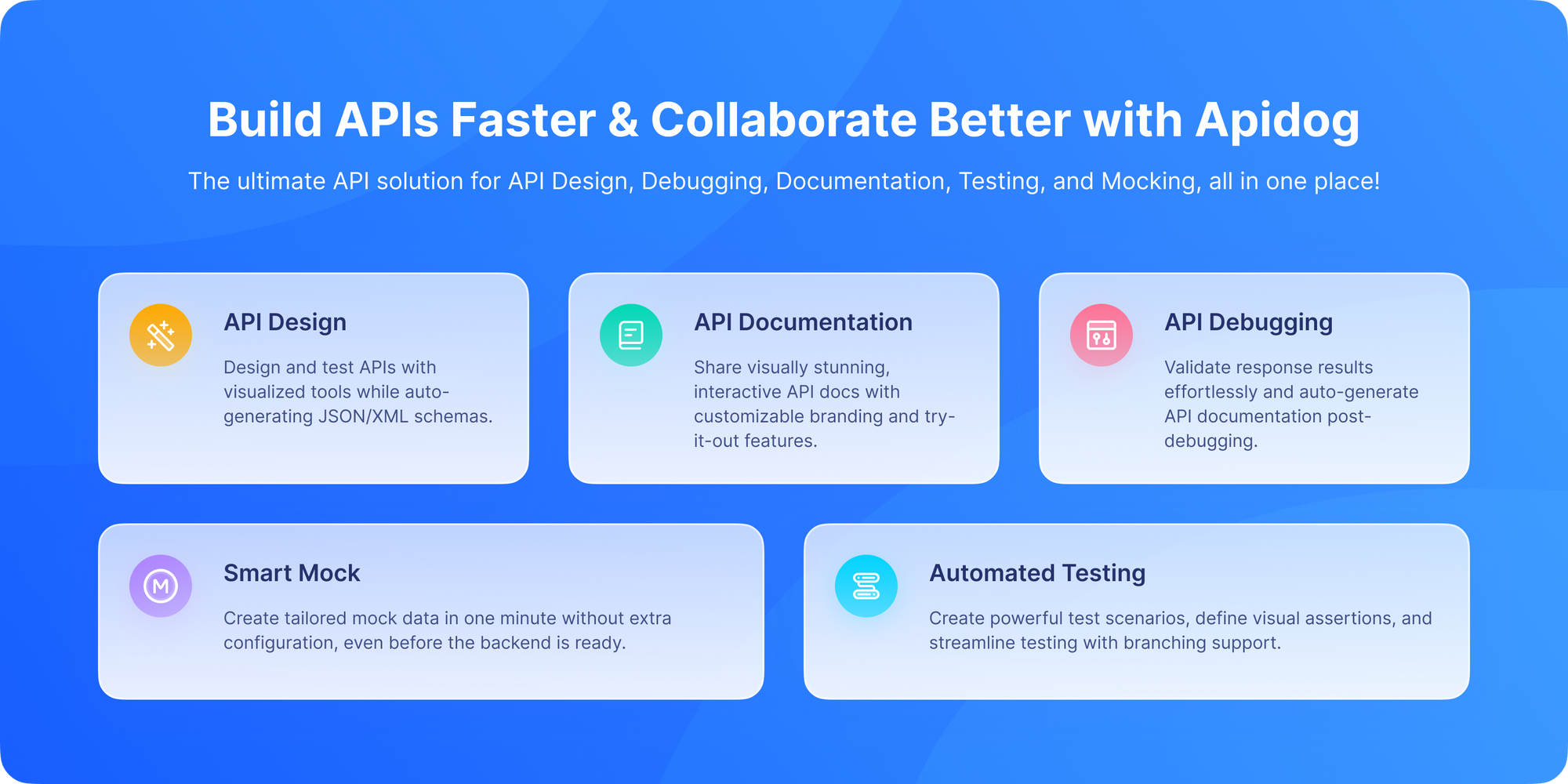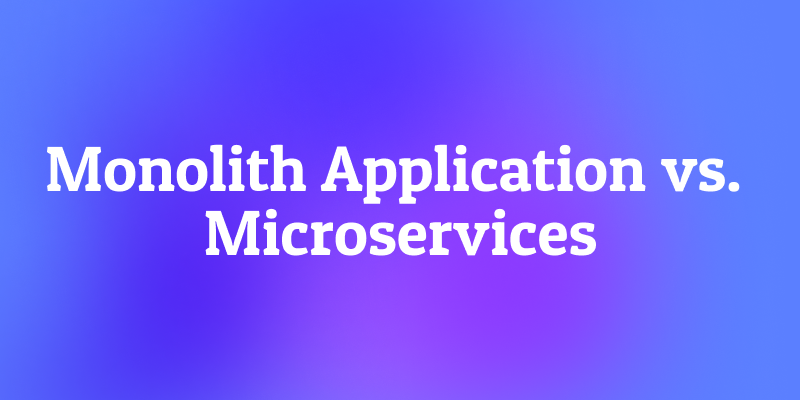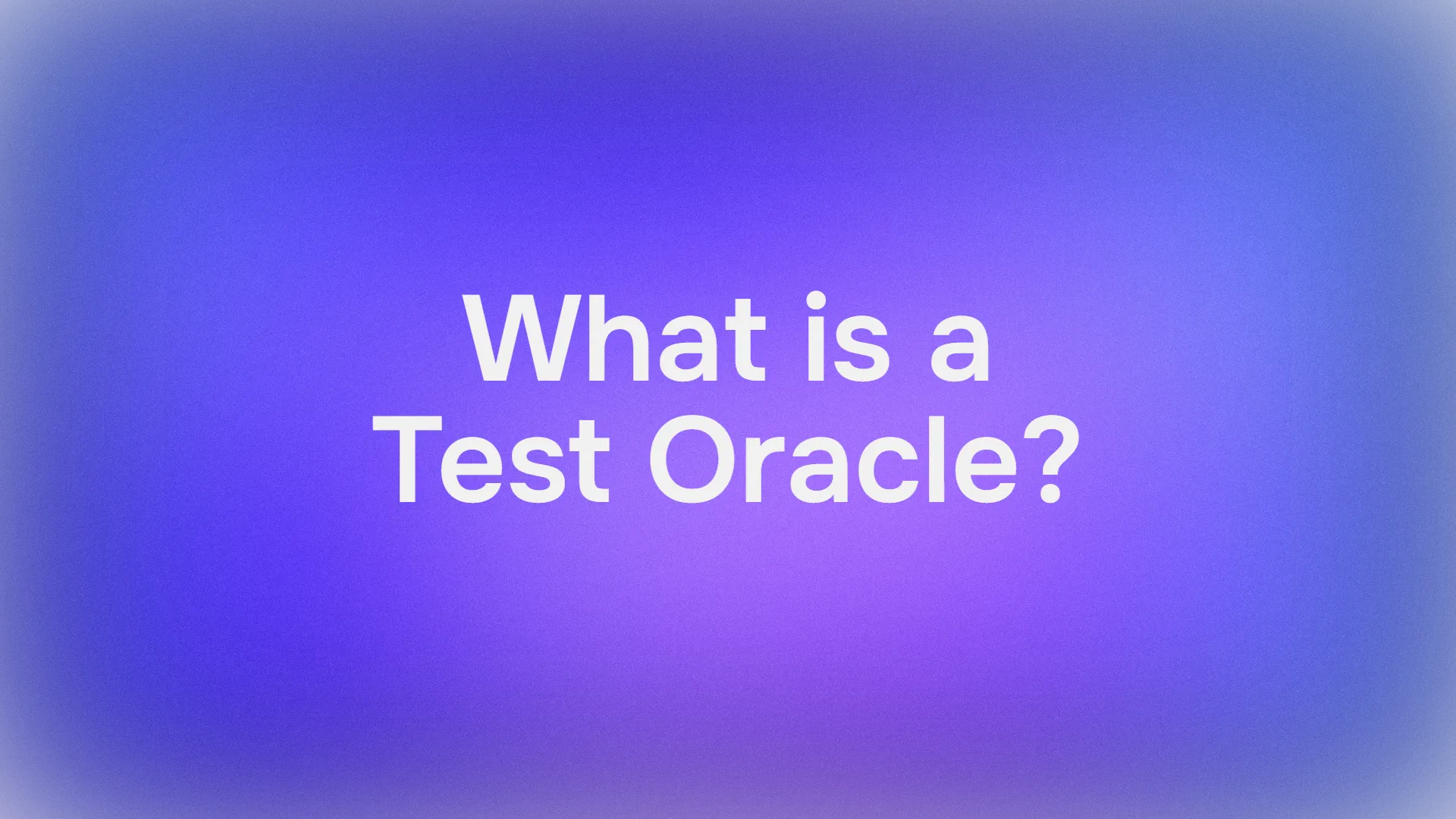You’ve come up with a great idea for a new software application. You’ve mapped out the features, identified your target users, and you’re ready to start building. But then comes the big question—the one that will shape your development process, your team, and even your company’s future:
How should we structure the application?
Do you build it as a monolithic application—a single, unified codebase? Or do you split it into a set of smaller, independent services—the microservices approach?
If you’ve spent any time in software development, you’ve probably seen debates about monoliths vs. microservices. The choice affects how your software is built, deployed, scaled, and maintained. But which is better? Which should you use?
The answer isn’t simple. Each has its own advantages, drawbacks, and best-fit scenarios. There’s no universal “right” answer—it all depends on your project’s context, your team’s strengths, and your long-term goals.
One thing, however, is always true: APIs play a central role.
APIs are the glue that connects modern systems. Whether you’re working with a monolith or a microservices setup, strong API design and testing is critical. In microservices especially, APIs handle the communication between services—making the right tools essential.
That’s where Apidog comes in. With Apidog, you can design, mock, test, and manage APIs in one place. It helps simplify complex API workflows and ensures smooth communication across your system. Best of all, you can download it for free and start experimenting right away.
Now, let’s break down these two architectural styles, cut through the hype, and figure out which one makes the most sense for your project.
Introduction to Software Architectures
Before we talk about monolithic vs microservices, let’s zoom out a little. Software architecture is essentially the blueprint for how an application is structured. It dictates how components interact, how data flows, and how developers maintain and scale the system.
In the past, most applications were monolithic built as a single, unified unit. Over time, however, the rise of cloud computing, scalability needs, and faster release cycles led to the popularity of microservices.
Both styles are still widely used today. Understanding their trade-offs is crucial for making the right decision.
Let's Set the Stage: What Do We Even Mean?
Before we compare them, we need to define our contenders.
The Monolithic Application: The All-in-One Powerhouse
Imagine a classic, self-contained desktop application like Microsoft Word or Adobe Photoshop. A monolithic application is built as one large, indivisible unit. All of the application’s features from authentication to payment to notifications are packaged together and deployed as a single executable or service.
This means:
- Single Codebase: All your business logic, user interface, and data access code are in one repository.
- Unified Deployment: You build and deploy the entire application as one package. If you change one line of code, you deploy the whole thing.
- Shared Memory Space: All components communicate with each other through simple method calls or function invocations within the same process.
- Single Database: Typically, a monolithic app uses one central database that all parts of the application talk to.
Think of it like a Swiss Army knife. It's a single, compact tool that has everything you need folded into one place. It's simple to carry around (deploy) and use, but if you need to change the screwdriver, you might have to take the whole knife apart.
The Microservices Architecture: The Distributed Specialized Team
Now, imagine a modern manufacturing assembly line. Each station on the line is specialized: one installs the engine, another attaches the doors, and a third paints the chassis. Each station is independent, has its own tools, and can be upgraded or repaired without stopping the entire line.
Microservices are like that. Microservices splits an application into multiple small, independent services, each responsible for a specific business function. Each service:
- Is Loosely Coupled: Services are independent of each other. Changes to one service shouldn't require changes to another.
- Owns Its Domain: Each service is built around a specific business capability (e.g., a "User Service," an "Order Service," a "Payment Service").
- Has Its Own Database: A service owns its private database, and other services cannot access it directly. They must go through the service's API.
- Communicates via APIs: Services talk to each other over a network using lightweight protocols, usually HTTP/REST with JSON or gRPC.
This is like having a specialized toolbox. You grab the exact wrench you need for the job. You can buy a better wrench without replacing the entire toolbox, but now you have to manage a box full of separate tools.
Monolithic Application vs Microservices: The Key Differences
Here’s a simple table to highlight the core differences between monolithic applications and microservices:
| Aspect | Monolithic Application | Microservices Architecture |
|---|---|---|
| Structure | Single codebase with tightly coupled modules | Multiple independent services, loosely coupled |
| Deployment | Entire app deployed as one unit | Each microservice deployed independently |
| Scalability | Whole app scales as one | Individual services scale based on load |
| Development | Easier to start; less initial planning | More upfront planning and coordination |
| Technology stack | Typically uniform | Each service can use best-suited technology |
| Fault isolation | A failure anywhere can bring down the app | Failures isolated to single services |
| Team organization | Smaller teams work on one codebase | Teams can own individual services |
| Maintenance | Can become complex as app grows | Easier to maintain and update independently |
| Testing | Centralized testing, faster to execute | Requires testing of individual services and their interactions |
| Communication | Direct function calls within code | Network calls between services (API-based) |
The Great Debate: Breaking Down the Pros and Cons
Now that we know what they are, let's pit them against each other across several key dimensions.
1. Development and Simplicity
- Monolith (Pro): Simple to develop. Getting started is easy. You don't have to worry about network communication, service discovery, or distributed data. You can build features quickly by adding new modules and calling functions directly. It's ideal for small teams and early-stage startups where speed of initial development is critical.
- Microservices (Con): Complex to develop. You immediately introduce distributed systems complexity. Developers must handle inter-service communication, manage multiple repositories, and deal with the network's inherent unreliability (timeouts, retries, failures). The learning curve is steeper.
2. Deployment and Scalability
- Monolith (Con): Inflexible scaling and deployment. To scale any part of the application, you must scale the entire monolith. If your product page is getting hammered, you have to spin up entire new copies of your app, even the parts that aren't under load (like the admin panel). This is inefficient and costly.
- Microservices (Pro): Granular scaling and independent deployment. This is their superpower. You can scale only the services that need it. The "Payment Service" can handle 100 instances during a sale while the "User Review Service" stays at 2. Each service can also be deployed independently, allowing teams to release updates faster and with less risk.
3. Technology and Flexibility
- Monolith (Con): Technology lock-in. You're generally locked into one technology stack for the entire application. It's incredibly difficult to use the right tool for the job if every job has to be done with the same tool.
- Microservices (Pro): Polyglot prowess. Each service can be written in a different programming language, use a different framework, and use a different type of database (SQL for one, NoSQL for another) that best suits its specific needs. The "Data Analytics Service" can use Python and Pandas, while the "API Gateway" can use Go for performance.
4. Reliability and Fault Isolation
- Monolith (Con): Single point of failure. A bug in a minor, obscure module can crash the entire application. A memory leak anywhere brings everything down.
- Microservices (Pro): Built-in fault isolation. If the "Recommendation Service" crashes, the rest of the application (browsing products, adding to cart, checking out) can often continue to function, perhaps by displaying a bland "Customers also bought" section instead of crashing completely.
5. Team Structure and Ownership
- Monolith (Con): Inefficient for large teams. As the codebase grows, it becomes harder for large teams to work on it without stepping on each other's toes. Coordination overhead increases, and deployment becomes a stressful, all-hands-on-deck event.
- Microservices (Pro): Enables team autonomy. The architecture aligns perfectly with Conway's Law. You can structure your teams around business domains (a "Checkout Team," a "Search Team"). Each team can own their service end-to-end, develop, deploy, and operate it independently, enabling much greater agility and ownership.
When to Choose Monolithic Architecture
Here are situations when a monolithic approach shines:
- Small to Medium Applications: When your app is relatively simple or has limited scale requirements.
- Tight Deadlines: For rapid prototyping or MVPs, monolithic apps are quicker to build. Your initial goal is to validate your business idea and find product-market fit. A monolith lets you iterate and pivot much more quickly.
- Limited Team Size/Resources: For small teams or organizations without the capacity to manage complex distributed systems.
- Limited Technology Diversity Needed: When uniformity in tech stack is preferred.
When to Go for Microservices
Microservices make sense when:
- Large, Complex Systems: Your app contains many distinct functions that grow independently.
- Scalability Is Crucial: You expect varied load patterns and want efficient resource usage. Certain parts of your application have vastly different resource requirements (CPU, memory, database load) and need to be scaled independently.
- Multiple Teams: Teams can work autonomously on different services, speeding up development. You have multiple teams (5-10+ developers) constantly getting blocked on each other in the same codebase.
- Continuous Deployment: You want to deploy updates frequently and independently.
- Technology Innovation: You want to adopt different tools or languages in different parts of your app. A small change in one area keeps causing unexpected failures in unrelated parts of the system.
Real-World Examples of Monoliths and Microservices
- Monoliths: Early versions of eBay, Twitter, and Shopify.
- Microservices: Netflix, Uber, Amazon.
Interestingly, many companies start as monoliths, then transition to microservices as they grow.
API Management in Both Architectures
Regardless of architecture, APIs play a central role.
- In monoliths, APIs are often internal (function calls).
- In microservices, APIs are the backbone of communication.
This is why API design, testing, and documentation tools are essential in both worlds.
How Apidog Fits Into Both Worlds

Whether building monolithic applications or microservices, APIs are the lifeblood of modern software. Managing and testing these APIs effectively is essential to delivering resilient and reliable systems. This is where Apidog proves its worth.
- In a Monolith: Even within a monolith, you might have internal modules that communicate. Using Apidog to design API contracts between these modules as if they were separate services is a fantastic practice. It forces clean separation and makes the eventual split into microservices much, much easier. It's a form of "logical microservices" within a physical monolith.
- In a Microservices Architecture: Apidog is indispensable. It becomes the central hub for designing, testing, documenting, and mocking the APIs that your services use to communicate. Teams can agree on an API contract in Apidog before writing any code, enabling parallel development. They can mock the "User Service" API so the "Order Service" team can keep working even if the User Service isn't ready. It manages the complexity that microservices introduce.
By using Apidog, teams working on monolithic or microservices-based applications gain better control over their API lifecycles and can accelerate their development and deployment cycles with confidence.
The Hidden Costs and Challenges
Microservices aren't all sunshine and rainbows. They come with a massive operational overhead that is often underestimated.
- Distributed Data Management: This is the hardest part. Maintaining data consistency across services is a nightmare. You have to embrace eventual consistency and patterns like Saga pattern to handle transactions that span multiple services.
- Networking Complexity: You now have a network between your components. You must handle service discovery (how does Service A find Service B?), load balancing, API gateways, retries, circuit breakers, and latency. A tool like Apidog becomes critical here for designing, testing, and mocking these inter-service APIs to ensure they work correctly before deployment.
- Monitoring and Debugging: Troubleshooting is no longer looking at a single log file. You need distributed tracing (e.g., with Jaeger or Zipkin) to follow a single request as it zig-zags through a dozen services. Monitoring the health of dozens of services is a full-time job.
- Testing: Testing a single service in isolation (unit testing) is easy, but testing the entire integrated system is incredibly complex. You need sophisticated testing environments and contract testing to ensure services don't break each other.
Migration Strategies: From Monolith to Microservices
If you’re running a monolith today but want to move to microservices, don’t worry. Many companies have done it successfully.
Typical strategies include:
- Strangling the monolith: Gradually replace parts of the monolith with microservices.
- Identifying modules: Start with the least dependent parts.
- Using APIs as boundaries: Expose monolith functionality via APIs and then migrate behind the scenes.
Common Myths About Monoliths vs Microservices
- "Monoliths are outdated.": Not true; they’re still great for small apps.
- "Microservices always improve performance.": Not always; network overhead can slow things down.
- "You must choose one forever.": In reality, many companies evolve from monolith to microservices over time.
Conclusion: It's a Spectrum, Not a Binary Choice
The monolith vs. microservices debate is a false dichotomy. The debate over monolithic application vs microservices isn’t about choosing a “winner.” It’s about choosing the right architecture for your current needs.
The journey often looks like this:
- Start with a Monolith: Build it quickly, learn from users, and find your core value.
- Refactor to a Modular Monolith: As you grow, structure your code with clear internal boundaries and APIs.
- Extract Specific Microservices: When a specific module has a clear reason to be separate (e.g., a high-load, resource-intensive, or technologically unique service), break it out.
- Repeat as Needed: Gradually evolve your architecture based on actual, measurable needs, not hype.
The goal is not to have microservices. The goal is to build a successful, maintainable, and scalable product. Choose the architecture that helps you achieve that goal with the least amount of complexity for your current stage. Either way, your APIs will remain at the center of your architecture. For that, you’ll need the right tools. And use tools like Apidog to ensure that whatever you build, it's built on a foundation of well-designed, reliable APIs, it makes designing, testing, and managing APIs easier, no matter what architecture you choose.



